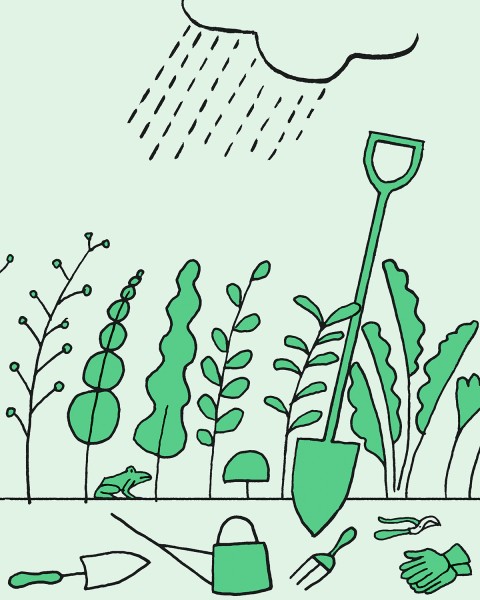
(Illustration by Nicholas Blechman)
The long, hot days of August are mostly behind us now, and here in Chicago we can expect another month or so of time in the garden before the first frost hits. I moved into a house—with a yard!—two summers ago, but the first summer was spent in a post-move exhausted haze, and last summer was spent on the road, so other than a few scraggy, half-hearted tomatoes, the garden part of it lay neglected.
I grew up in a house with a delineated vegetable garden and a compost pile we would rake leaves into, and I remember planting and picking veggies, cosmos and sunflowers higher than my head, sweet peas and beans vining up a trellis. Then we moved to Texas (forbiddingly hot), and I moved to New York (no outdoor space), Boston (more broken glass and rocks than usable space), and an apartment in Chicago (enough light for a houseplant garden, but no outdoor space). So now, this house and this summer represent the first time since childhood when I can see a full growing season out and tend to it myself. I’m not really a rookie, but I also, in a lot of ways, don’t really know what I’m doing.
The early days of putting in a garden are both hard work and heady—you’re weeding and watering and monitoring but also noticing new leaves and tendrils, finding new little sprouts, sweating over the prep work of soil amendment and bed planning and starting seeds. And then there’s a long, slow stretch when your seeds are sprouting, doing what they’re meant to do: unfurling, storing up sunlight and water and nutrients enough to produce sugars or proteins in the form of flowers and seeds, following their biological imperative. You can’t rush them, and after all the fussing and setting things in place, you’re left to just watch.




